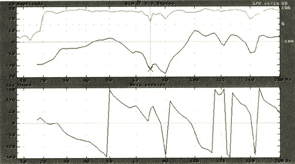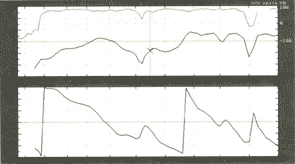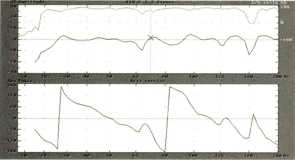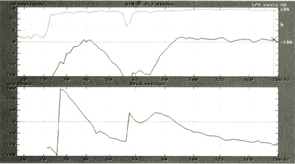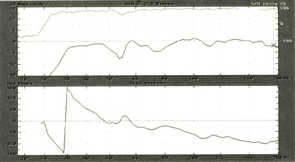Speaker Placement and Acoustic Environment Effects
on Nearfield Monitor Systems –
MIX Magazine
To Woof Or Not To Woof? A SUBstantial Question – MIX Magazine
Optimizing the Studio Listening Environment – MIX Magazine
Acoustic Solutions, The RPG B.A.S.S. Trap – MIX Magazine
Examining the Yamaha NS-10M “Tissue Paper
Phenomenon” –
Recording Engineer/Producer Magazine
Sound Advice 1 – Modern Home Theater
Sound Advice 2 – Modern Home Theater
Sound Advice 3 – Modern Home Theater
Sound Advice 4 – Modern Home Theater
Sound Advice 5 – Modern Home Theater
Sound Advice 6 – Modern Home Theater
Sound Advice 7 – Modern Home Theater
Educational Resources
Articles written either for MIX
Magazine or Recording Engineer/
Producer Magazine or Modern
Home Theater.
– by Bob Hodas
Gain insights into studio listening environments and rooms.
Acoustic Solutions, The RPG B.A.S.S. Trap
MIX Magazine, August 1997 – by Bob Hodas
Last year I was called in to look at a mastering studio belonging to a major label. The request came from the speaker manufacturer who had just sold a new set of monitors to the studio. No one thought that the speakers sounded right in the room. and the manufacturer was concerned. This was a high quality direct radiating system with active 2-way crossovers. The speakers were mounted on very large and very heavy stands that stood out from the front and side walls at an appropriate distance. The room had been designed by a well known studio designer from the Los Angeles area. Most everyone agreed that some problem existed in the low end. Of course, since this was a mastering room it had to be accurate. And so the hunt began to fix the system.
There were many layers of problems to be sorted out I found that one of the active crossovers had internal wiring problems which needed to be fixed before we could proceed. We also replaced the 1/3 octave graphic equalizers with high quality parametric equalizers which allowed for a more accurate tuning and a better sounding signal path. There were first order reflections coming off of the ceiling and the side walls which needed treatment since they caused bad coherence in the listening area. Most alarming was a 29dB hole centered at around 70Hz (figure 1).
Chart #1: Initial low-frequency hole in the system response caused by side wall dimensions. Note that the frequency scale is +/- 30 dB. Phase response is quite rough.
"How could a room designed by one of Los Angeles' top studio designers have a hole that size?" you might ask. Well I wish I could tell you. For whatever reasons, this room was built with all paralell surfaces and then a few diffusors and absorbers were added as treatment. The result was a huge hole that coresponded to the side wall dimension.
The studio needed a solution that did not have a great deal of impact on the room physically. This meant that large bass traps in the front or back of the room were out of the question. Trapping the corners would be an ideal solution but the traps needed to be compact. I had read about the RPG B.A.S.S. Trap and decided to try it out.
B.A.S.S. Trap stands for Trapezoidal Bass Absorbing Soffit System. It is a membrane absorber that is tuned to 71Hz. A membrane absorber operates by resonating at a specific frequency that is tuned by design. The trap absorbs the tuned frequency (sound turns into heat through vibration of the membrane), thus solving the problem. Design philosophy centered around fitting the trap into the room corners that are often unused, a good thing for space challenged project studios. R.P.G. claims this newly designed fire-retardant membrane is three to four times more efficient than conventional membranes. The B.A.S.S. Trap provides 80% efficiency at 71Hz and behaves like a low frequency shelf attenuator as opposed to conventional band pass absorbers. The unit is designed to fit into corners, and at 2' (H) x 2' (W) x 11" (D) it is quite unobtrusive in a room. The trap is covered with a nice gray fabric or can be ordered with your own custom fabric. The trap is also available as a panel that fits in between wall studs for installation during room construction.
So how would absorbing 71Hz help a 29db hole you might ask? The hole in this case is caused by excessive out of phase information arriving at the mix position. So if we can remove that information, the hole will fill in. The big question was where to place the traps for the most efficient and effective results. Since the cancelation coresponded to the room width, the first idea for placement was on the side walls centered at the mix position. This yielded absolutely no results at all. We then tried the traps in the front corners of the room behind the speakers. This proved to be quite effective when we placed them as high in the corners as possible, and not so effective down by the floor. We tried the front wall/ceiling juncture with very little results. We had good results in the rear cormers, once again placed high instead of low. Any wall ceiling juncture we tried was fruitless and in fact non corner placement generally yielded poor results. We could see that the trap placement needed to be very specific in order to be effective. The corner placement was optimum for the studios visual impact and in fact you don't even realize that they are there. We ended up with five B.A.S.S. traps in each front corner and three in the rears (figure 2).
Chart #2: Significant response improvement with the final trap configuration in place. Phase response has smoothed out considerably as well.
Chart #3: Final room response with traps and equalization.
Once we had done as much as possible acoustically, we applied some equalization (figure 3). Why not just fill in the hole with equalization? Pure equalization is not the answer to a problem such as this for several reasons. With a hole this size you would have to use one hell of a lot of equalization. This would put an excesive amount of strain on the system since you would be asking the woofer to make up for a modal room phenomenon. Although the hole would be filled in at the mix position, the room problem would still exist and you would lose a tremendous amount of system headroom. This amount of equalization can also induce an extreme amount of phase shift into the system. Additionally, equalization would only correct the problem for one small spot in the room. Since this problem exists side to side, as you moved off center, the equalized hole is going to become a gigantic bump. Try explaining that you the client sitting next to you.
Chart #4: Composer's room prior to traps. Note that the frequency scale is only +/- 18 dB.
I was encouraged by the results in the above room and decided to try the B.A.S.S. traps in a small composers studio. Major television scoring is being done in this tiny little room and the bass problems were horriffic (figure 4). The most we could hope for was to expand the sweet spot by a couple of feet. There was very little space for any acoustic treatment as all of the walls were covered with equipment, books, DATs or something. Because of the placement of the windows and doors, we could only fit the traps in the front corners. This proved to be effective, although not nearly as much as in the mastering room (figure 5). Ideally we would have been able to do much more if we had access to the rear corners. Still, the client felt that the results warranted the cost and the composer is now more comfortable and trusting of his space.
Chart #5: Composer's room after traps demonstrates significant frequency and phase improvements. Below, composer's final room response with traps and equalization.
I cannot say that this trap will alwaysbe the perfect solution. I measured a room that had a large hole at 70Hz and an eight foot ceiling which indicated an ideal situation. We found little or no change in this room utilizing the traps. The reason for this was that one wall was sucking out the problem frequency. The wall needed to be reinforced in order to fix the problem. It is important that you test each individual situation and make your decisions of placement and effectiveness based on science, not rules of thumb. This is a good philosophy no matter what type of treatment you plan on utilizing. In all fairness to the studio owner, guesswork should not be part of the program.
Overall the RPG B.A.S.S. Trap is a tool that I found to be very effective. I will continue to use it as an acoustic solution when needed. If your room has a problem around 70/80Hz, an eight foot ceiling (as most home studios do), or a room dimension that is a multiple of eight feet, then it would be worthwhile to invest some energy into checking out this product.
